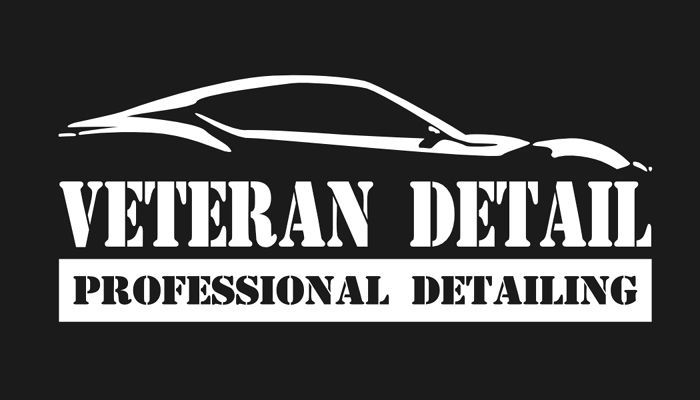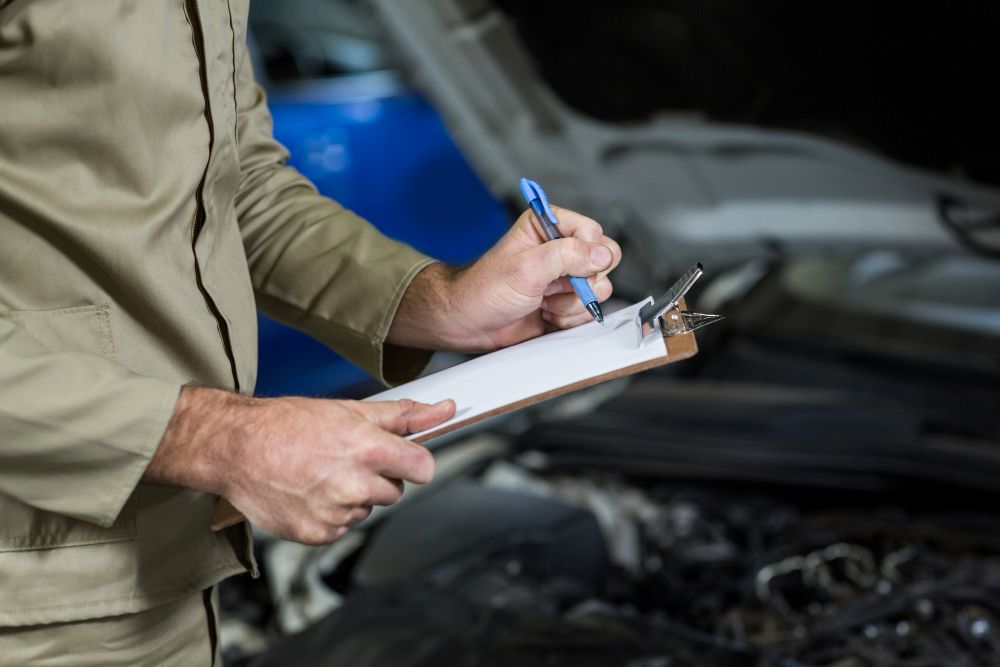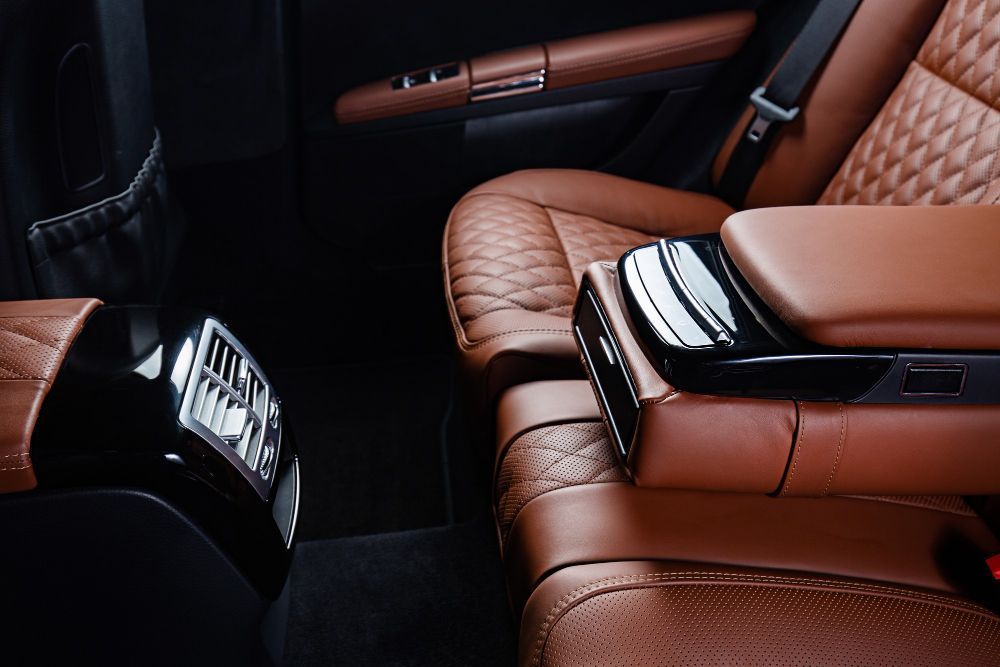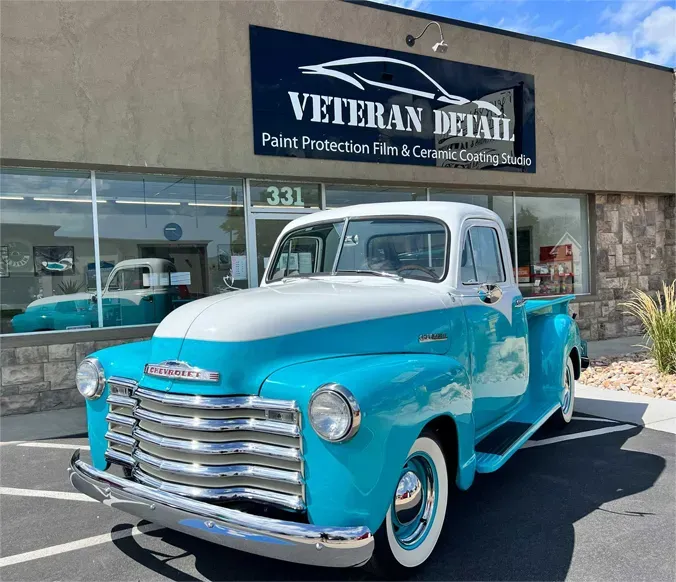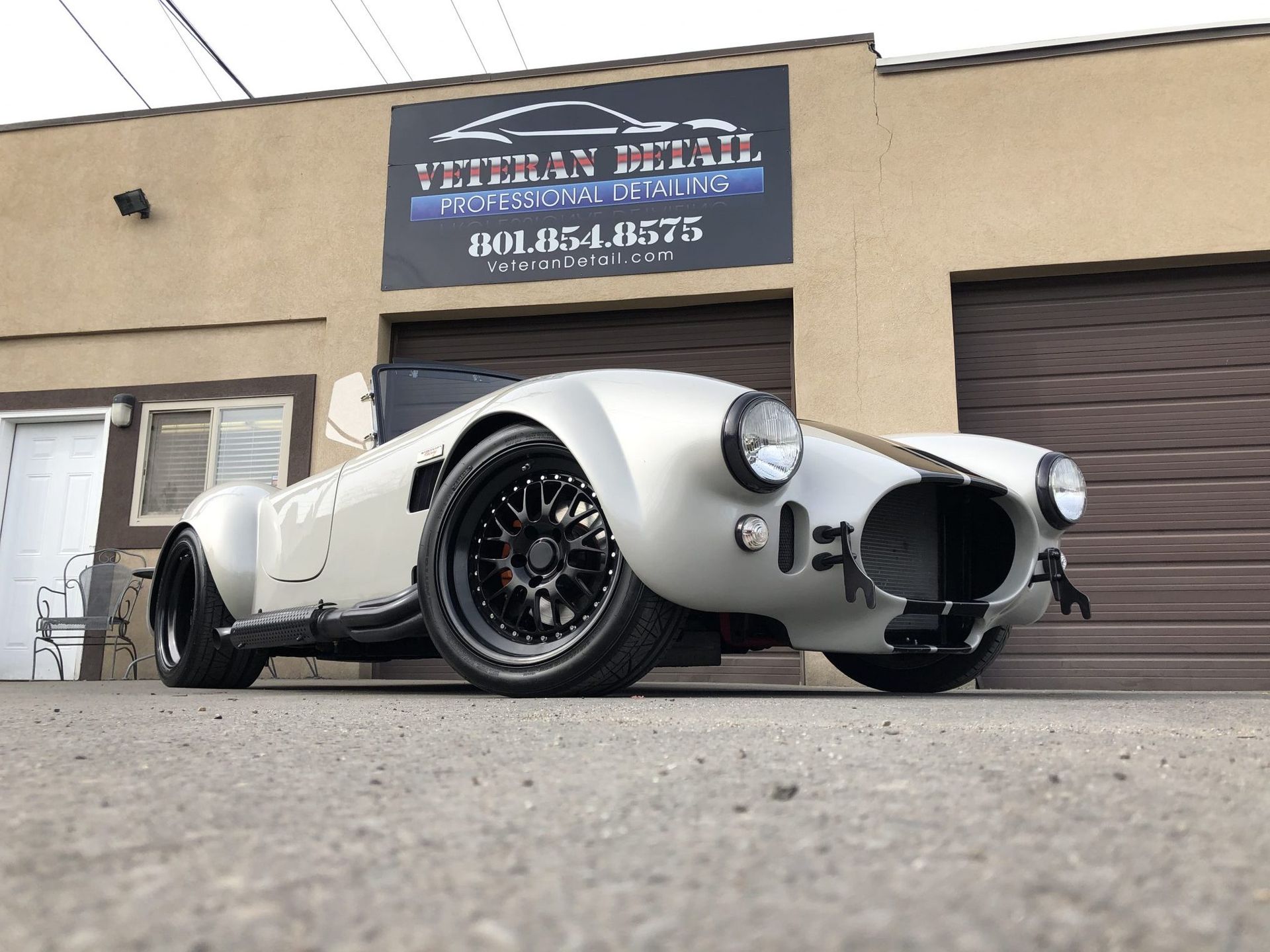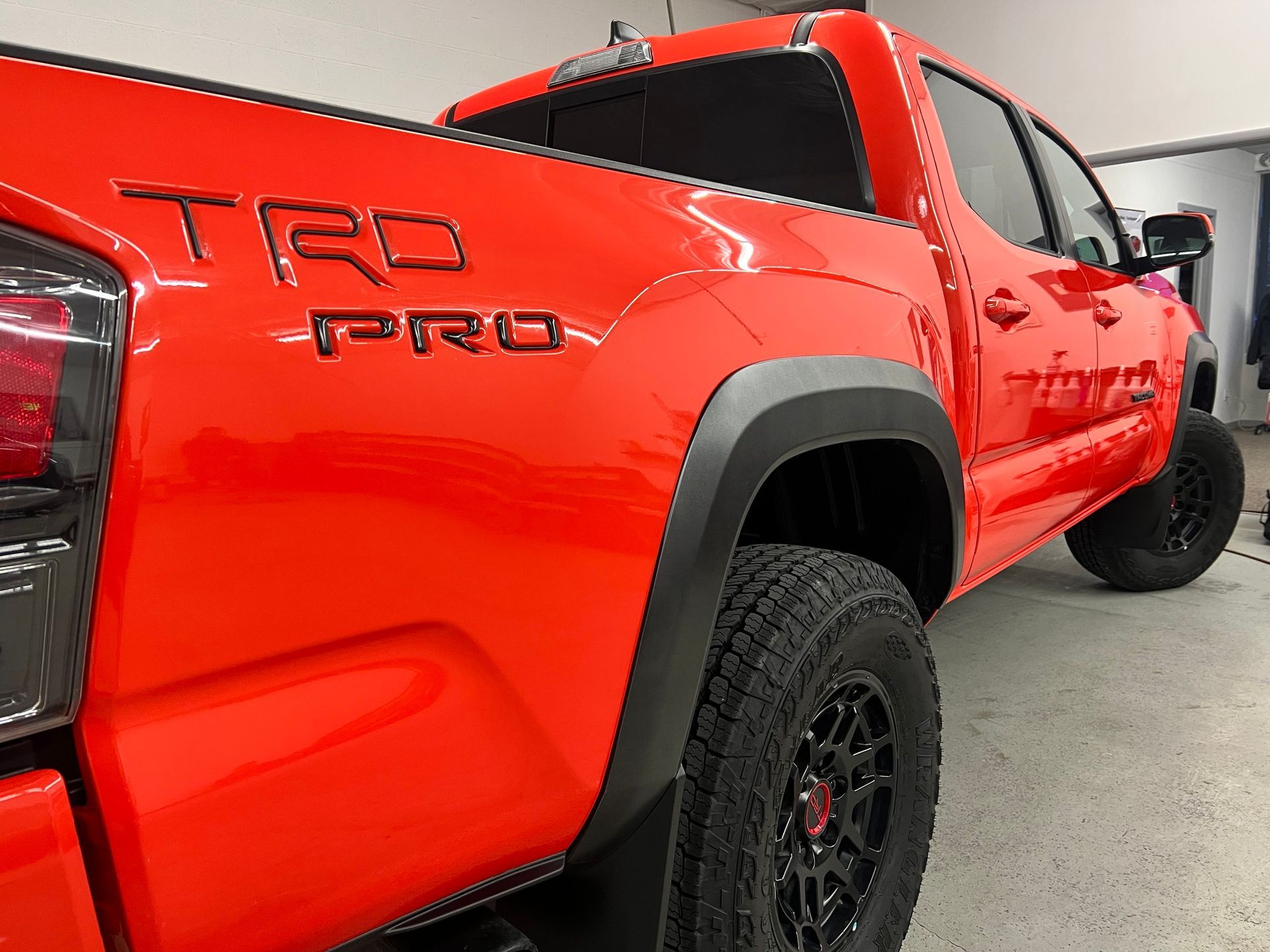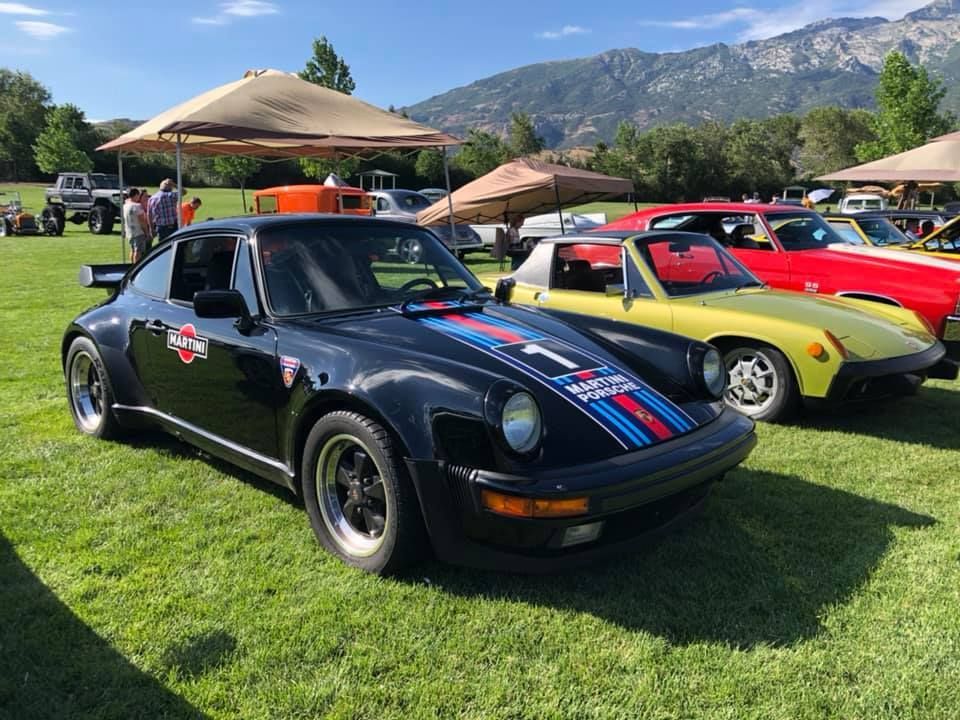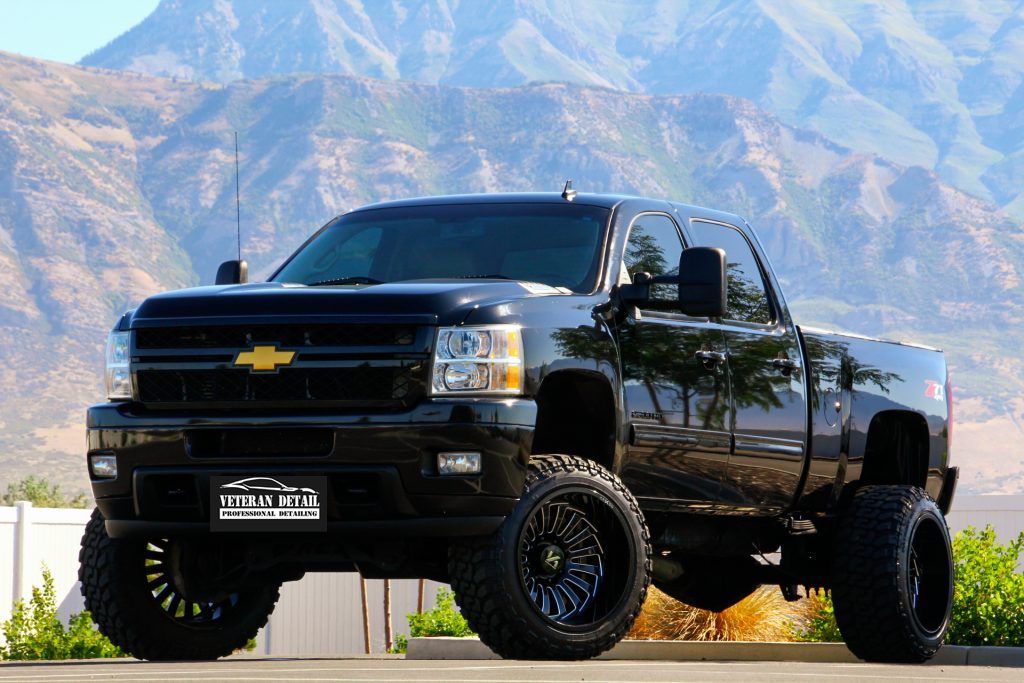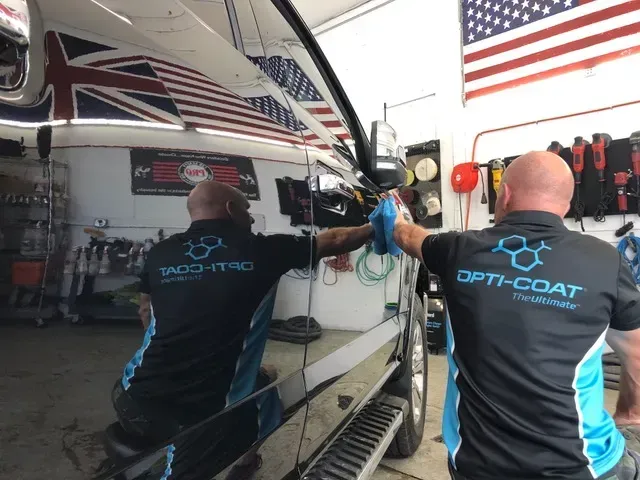Why black vehicles need specialized detailing – tips for Provo area owners
Black vehicles are stunning when clean — and frustrating when they’re not. From mirror-like reflections to deep, rich color, black paint highlights every curve of your car. But in Provo’s mix of dust, sun, and unpredictable weather, black paint also reveals every swirl mark, scratch, and water spot.
Maintaining that flawless look takes more than regular washing. Black vehicles require specialized detailing techniques, careful product selection, and consistent upkeep to keep them looking show-ready. This guide breaks down why black paint is so challenging — and how Provo-area owners can keep their cars looking better for longer.
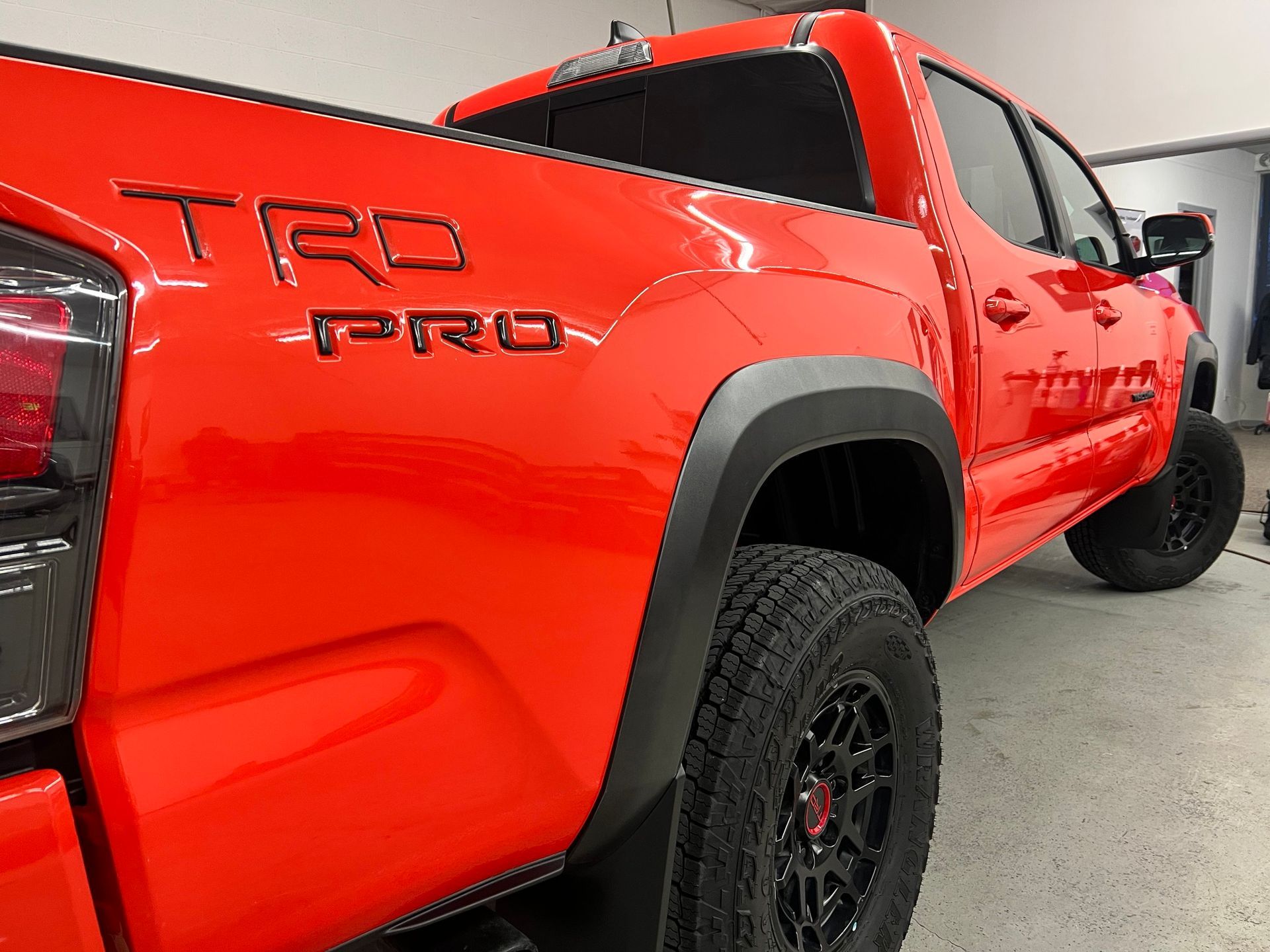
Why black vehicles need special care
Black paint is both the most beautiful and the most unforgiving finish. It shows everything — from micro-scratches to fine dust — and it reacts quickly to Utah’s environmental conditions.
Here’s what makes black paint so tricky:
- Every imperfection stands out: Even the smallest swirl marks reflect light and become visible on dark paint.
- Heat absorption: Black surfaces get significantly hotter under the Provo sun, accelerating wax breakdown and water-spot etching.
- Dust and pollen visibility: Utah’s dry climate means airborne particles quickly dull your finish.
- Hard water exposure: Local water sources often leave mineral-heavy spots that stain black surfaces if not wiped properly.
These factors make routine detailing not just a cosmetic task, but a form of protection — essential for maintaining depth, gloss, and long-term paint health.
Common challenges for black vehicles in Provo
Provo’s environment brings specific paint-care challenges for black vehicle owners. Understanding them helps you prevent long-term damage.
1. Utah dust and pollen accumulation
The valley’s dry air and construction dust cling quickly to dark paint, making vehicles look dirty within hours. This dust acts like fine sandpaper when wiped carelessly, creating micro-scratches and dulling the shine.
2. Sun and UV exposure
High-elevation sunlight is strong in Utah County. Black paint absorbs more heat, which speeds up oxidation and breaks down protective waxes faster. This can cause paint fading or “hologram” effects under direct sunlight.
3. Hard water and car washes
Provo’s water contains high mineral content. If you wash and let your car air-dry, those minerals bond to the clear coat, leaving visible water spots that can etch into the paint.
4. Poor washing techniques
Improper washing — such as using old sponges, dirty mitts, or circular motions — creates swirl marks that stand out dramatically on black paint.
5. Winter road film and salt
During Utah winters, road salt and de-icing chemicals stick to lower panels. On black cars, even light residue dulls the finish and increases corrosion risk if not cleaned regularly.
Specialized detailing techniques for black paint
Caring for black vehicles isn’t about washing more often — it’s about washing smarter. The right process and tools make all the difference.
1. Pre-rinse and foam soak
Always start by removing loose dirt with a thorough pre-rinse. Follow with a foam cannon soak — the foam softens contaminants and reduces friction during washing. This step prevents scratches before you even touch the paint.
2. Two-bucket hand wash method
Using two buckets — one for soap, one for rinse water — helps prevent reapplying dirt to the paint.
- Use a grit guard at the bottom of each bucket.
- Wash from top to bottom, section by section.
- Always use a soft microfiber mitt.
This minimizes swirl marks and maintains the mirror finish black paint is known for.
3. Proper drying technique
Instead of rubbing your car dry, use a clean microfiber drying towel or a car dryer blower. Rubbing increases the chance of micro-marring. If possible, dry in a shaded area to prevent water-spot formation.
4. Paint decontamination and correction
Over time, contaminants bond to your paint even after washing. Use these treatments periodically:
- Clay bar: Removes embedded particles for a smooth surface.
- Paint correction: Light machine polishing eliminates swirl marks and fine scratches.
- Glaze or sealant: Adds gloss and a protective layer that enhances depth.
5. Use ceramic coatings or PPF
For long-term protection, ceramic coatings and paint protection film (PPF) are worth the investment. Ceramic coatings repel water, reduce maintenance, and maintain deep gloss. PPF protects high-impact areas like hoods and mirrors from chips and scuffs.
Recommended maintenance schedule
Black vehicles demand consistency. Following a set routine prevents buildup and maintains shine through Provo’s varied seasons.
Here’s a simple care rhythm:
- Weekly: Gentle hand wash using proper technique.
- Monthly: Apply a spray wax or ceramic maintenance spray to reinforce gloss and protection.
- Quarterly: Deep clean, decontaminate, and inspect for scratches or swirl marks.
- Annually: Full professional detailing or paint correction service to restore finish clarity.
If you park outdoors often, consider adding an extra quick detailer session between washes to remove light dust safely.
Local tips for Provo area black car owners
Black cars in Utah’s climate face a unique combination of sun, dust, and mineral-heavy water. To stay ahead of it, keep these local tips in mind:
- Avoid washing in direct sunlight. Wait for cooler hours or wash indoors to prevent spotting.
- Use filtered or deionized water. This reduces mineral residue from local water supplies.
- Keep a soft detail spray and microfiber in your trunk. Use it for light dust or fingerprints — never dry wipe!
- Wax before winter. A pre-season wax or ceramic boost adds a layer of salt and brine resistance.
- Detail after spring storms. Rain mixes with dust and pollen, leaving visible streaks on black paint.
FAQs
- Why do black cars show swirl marks so easily?
Black paint reflects light differently than lighter colors, making even small scratches or circular micro-marring visible under sunlight or streetlights. - Is ceramic coating worth it for a black car?
Absolutely. Ceramic coatings help prevent swirl marks, make washing easier, and enhance gloss — especially important for black vehicles that show imperfections quickly. - Can automatic car washes damage black paint?
Yes. The brushes and recycled water in automatic washes often create swirl marks and micro-scratches. Hand washing is safer and yields a better shine. - How can I prevent water spots on my black car?
Use filtered water for washing, dry with microfiber towels immediately, and apply a hydrophobic protectant that repels mineral buildup. - How often should a black car be detailed?
At least twice a year — ideally before summer and winter. Frequent washing and occasional polishing in between will keep the paint rich and deep.
Conclusion
Black vehicles turn heads when detailed correctly, but they also demand precision. From Provo’s dusty summers to bright winter sun, maintaining that sleek, mirror finish requires proper washing, the right products, and consistent care.
Investing in specialized detailing — especially
professional services like paint correction,
ceramic coatings, and
PPF
— keeps your black car looking flawless while protecting it from Utah’s tough conditions. With the right routine, your vehicle won’t just stay clean — it’ll stand out.
